Carthaginian Religion › The Kingdom of Kush » Ancient origins
Articles and Definitions › Contents
- Carthaginian Religion › Antique Origins
- The Kingdom of Kush › Ancient History
Ancient civilizations › Historical and archaeological sites
Carthaginian Religion › Antique Origins
Definition and Origins
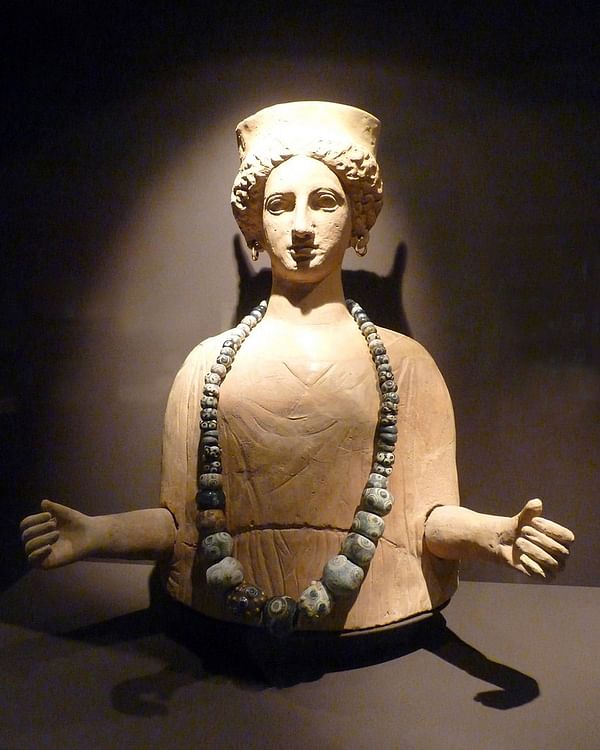
Carthage was founded by the Phoenician city of Tyre in the 9th century BCE, and along with many other cultural practices, the city adopted aspects of the religion of its founding fathers. Polytheistic in nature, such important Phoenician gods as Melqart and Baal were worshipped in the colony alongside new ones such as Tanit. These, in turn, were spread to new Puniccolonies around the ancient Mediterranean while in the other direction gods from neighbouring cultures were incorporated into the Carthaginian pantheon. Temples were built in their honour, ceremonies were overseen by a priestly class, sacrifices were made to appease them, and their imagery appeared on ships, coins, and in the arts.
THE GODS
Most Carthaginian gods were inherited from the Phoenicians, but these were adapted, and their names and functions evolved over time. The most important Carthaginian deity was Melqart, patron and protector of the city of Tyre and perhaps given a similar role in early Carthage. Indeed, the colonists were obliged to send annual tribute - one-tenth of their annual profits - to the temple of Melqart at Tyre for the first few centuries of the colony's existence. In the 3rd century BCE the influential Barcid clan of Carthage were particularly keen worshippers of Melqart. Hannibal famously swore an oath to the god in 237 BCE when, aged 9, he stated that he would forever be the enemy of Rome. Hannibal, too, was not the only Carthaginian general that deified himself and took on the appearance of the god. The Greeks identified Melqart with their own hero Hercules, and a cult of Melqart-Hercules spread around the Mediterranean.
Baal Hammon ('lord of the altars of incense') was another important god, inspired by the Baal who was supreme god at the Phoenician city of Sidon. Baal had many other incarnations, or perhaps even separate deities under that name: Baal Iddir, Baal Marqod, Baal Oz, Baal Qarnem, Baal Sapon, and Baal Shamin. Historians, such is the lack of clarity on the specifics of Phoenician and Carthaginian gods, continue to discuss his association or even equivalence to Melqart and the Phoenician god El.
THE MOST IMPORTANT GODDESS WAS TANIT, WHO REPRESENTED A MOTHER GODDESS, LIFE, & FERTILITY.
Similarly, the Phoenician gods Eshmun (an equivalent of Adonis but also identified as Asclepius by the Greeks, suggesting he had an association with healing at Carthage), Reshef (the god of fire and lightning, linked to Apollo by the Greeks), and Rasap (associated with warfare ) were worshipped at Carthage but again with slightly different connotations such as Reshef (a form of Rasap) and Shadrap (associated with snakes and healing). Less important Phoenician gods surviving in Punic religion included Hawot (god of the dead), Hudis (the new moon), Kese (the full moon), Kusor/Kusorit (god/goddess of intelligence), and Semes (the sun goddess).
One of the most important Punic deities that were not worshipped in Phoenicia was Tanit ( Tnt ), although she may have been considered an attendant of Astarte there. Tanit came to prominence only from the 5th century BCE at Carthage, but she would eventually supersede Melqart and Baal Hammon in importance. She represented a mother goddess, life, and fertility. Strongly linked to Baal and considered the consort of Baal Hammon, she was commonly referred to as 'Tanit face of Baal' ( Tnt pn B'l ) and represented in inscriptions, mosaics, pottery, and stelae as a symbol (a triangle with a straight line and circle above it) seemingly representing a stylised female figure with arms outstretched. No other symbols are known of the other Carthaginian gods. Tanit was also associated with the palm tree, dove, the moon, fish, and pomegranate, all of which appear with her on Carthaginian coins and stelae dedicated to her. In later sculpture, she is most often portrayed with a lion's head and wings, and a second symbol of her is the bottle shape prevalent on votive stelae.
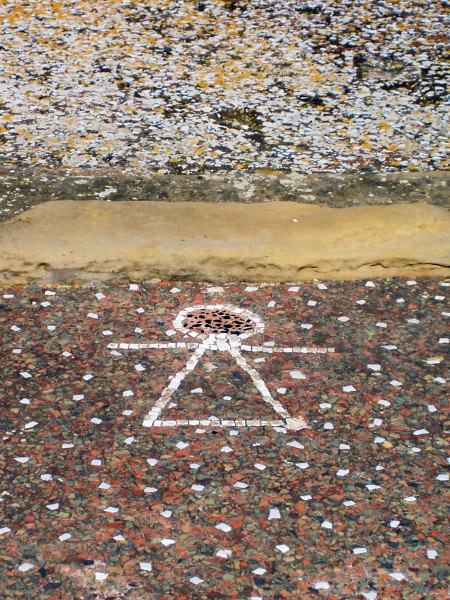
Tanit Mosaic
Finally, gods were adopted and adapted from the Greek pantheon following the increasing Hellenization of Carthage from the 4th century BCE. Demeter and Persephone (Kore) were especially popular and were incorporated into the Punic pantheon following a series of military disasters which the Carthaginians ascribed to their unwise destruction of the goddesses' temple at Syracuse in 396 BCE. High ranking priests and priestesses were specifically assigned to serve the goddesses. Another foreign import was Isis, who had a temple in the city. One of the goddess' priestesses is depicted on a stunning marble sarcophagus lid from the St. Monique tomb. The use of Egyptian-made and home-copied amulets was widespread at Carthage judging by their abundance in tombs.
THE PRIESTS
In the founding legend of Carthage, Dido ( Elissa ), the queen who fled from Tyre, picked up the High priest of Astarte in Cyprus on her way to North Africa, promising him that he and his descendants would hold the position of High Priest in the new city. This was the first of a priestly class at the city. The elite class of Carthage dominated the important religious posts.The head of the priests ( rb khnm ) was also a member of the Senate and the influential Council of 104. A committee of 10 senators was responsible for state religious matters. Priests would have enjoyed a high status but lived an austere life, symbolised by their distinctive shaved heads. Priests made themselves even more distinguished by painting themselves with red ochre during ceremonies. The majority of the city's religious positions seem to have been hereditary. Inscriptions inform us that a chief priest was responsible for a particular temple and assisted by a lower category of priests ( khnm ). There were female priests, but once again, the details of initiation and duties of the priestly class remain unknown. Priests may have controlled education, of which we know very little, and also the libraries we know existed at the time of Carthage's destruction in 146 BCE.
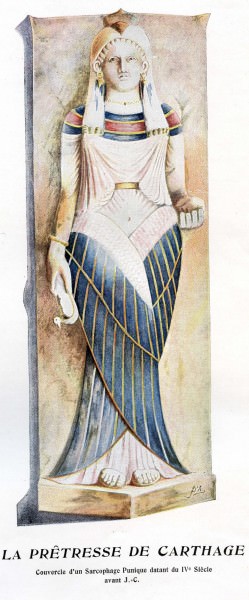
Priestess of Isis on a Carthaginian Sarcophagus Lid
THE TEMPLES
Inscriptions on Punic stelae describe many temples to many different deities at Carthage, but unfortunately, very little remains of them exist in the archaeological record due to the destruction of the city by the Romans at the end of the Third Punic Warin 146 BCE. There were probably as many temples at Carthage as at the contemporary cities of Rome and Athens. We can imagine they were similar to Phoenician temples such as Solomon ’s described in the Bible as designed by Phoenicians and Melqart's temple at Tyre, described by Herodotus. These had two large columns, one either side of the entrance which led to three chambers within which was not a representation of the god but a large bronze bowl with an eternal flame.
It was outside the temples that ceremonies were carried out such as prayers, burning incense, and making offerings to the gods at a specially dedicated altar. These could take the form of the pouring of libations, food offerings, flowers, animal sacrifice (bulls, lambs, poultry, birds etc.), and even human sacrifice ( molk ). We also know that temples were off-limits to women and pigs, although there were some priestesses who served certain deities and their temples. Religious ceremonies could also take place at natural features like rivers and springs as these were often held as sacred by the Carthaginians.
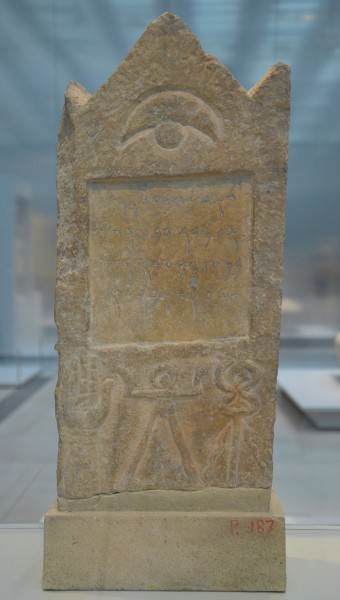
Punic Stele with Goddess Tanit
THE TOPHET
One of the rituals of the Phoenician and Punic religions was to sacrifice humans, especially children (but not only), according to ancient sources. The victims were killed by fire, although it is not clear precisely how. According to the ancient historians Clitarch and Diodorus, a hearth was set before a bronze statue of the god Baal (or El), who had outstretched arms on which the victim was placed before falling into the fire. They also mention the victims wearing a smiling mask to hide their tears from the god to whom they were being offered. The victim's ashes were then placed in an urn topped with a stone. The urns themselves were often recycled pots and jars from as far afield as Corinth and Egypt and so provide an interesting and valuable record of Mediterranean trade. From the 6th century BCE, stelae were dedicated to Baal or Tanit and placed on top of the urns instead of stones. Thousands of examples survive of these votive markers and are powerful evidence that the Carthaginian religion was practised by all levels of society. Some urns were buried in shaft tombs and the dedicated sacred open space for these urns was surrounded by walls and known as a tophet.
The tophet at Carthage was known as the 'precinct of Tanit' and located to the south of the city at Salammbo. It was first used in the 8th century BCE and continuously thereafter until the fall of Carthage in the Punic Wars. At its largest extent, it covered 6,000 square meters and has nine descending levels. There is a shrine area with an altar where the sacrifices were made.
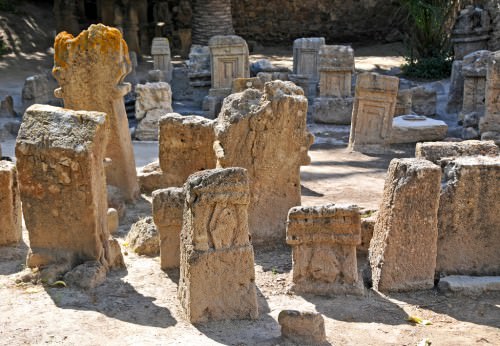
Tophet of Carthage
In the ancient world, the Phoenicians and Carthaginians earned a bloody reputation for frequent child sacrifice, but some historians have questioned the scale of this practice. Many stelae have an inscription which describes a human blood sacrifice, but others describe the substitution of a sheep or lamb for a child. Further, on closer inspection, it is notable that all of the literary references to human sacrifice suggest that it was necessary only in times of great danger to the state such as wars, plagues, and natural disasters, and was not an everyday practice. Even in Phoenician/Punic mythology, where the god El sacrifices his son Ieud, it is to save his country from collapse. In another example, Diodorus describes the Carthaginian general Hamilcar sacrificing a child during the siege of Agrigento in the 5th century BCE when the defenders were suffering from a fatal outbreak of disease. Further, human sacrifices in ancient sources are almost always the children of rulers and the ruling class, as the gods, apparently, were not to be moved by the sacrifice of the common people.
Analysis of the remains found within the urns at Carthage reveals that, overall, 80% of the human remains are from newborn babies or foetuses. This is similar to the percentage at other tophets such as on Tharros. The exact cause of death is not possible to determine, but historian ME Aubet concludes the following,
...everything points to them dying of natural causes, at birth or a few weeks later. Although human sacrifice may have been practised, the high proportion of newborn babies in the tophets shows that these enclosures served as burial places for children who died at birth or had not reached the age of two. (252)
Aubet also notes that the cemeteries of Punic cities do not contain the remains of young children, suggesting that all children, no matter the cause of death, were buried within the tophet. Child sacrifice did occur at Carthage, as it did in many other ancient cultures, but the physical evidence of the scale of such a practice does not seem to match the long-held infamous reputation the Phoenicians and Carthaginians have suffered from since antiquity.
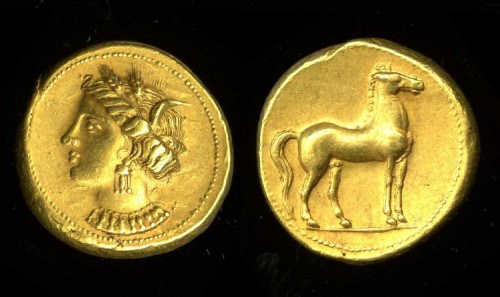
Tanit, Carthaginian Electrum Coin
CONCLUSION
Our information on many of the details of the Punic religion is, then, incomplete due to a lack of contemporary sources from the Carthaginians themselves. The situation is made more complex by the sometimes indiscriminate use of Greek and Latin names by ancient writers of those cultures when describing Carthage's religious practices, not to mention their bias against foreign practices. No temples survive, no texts on the Punic mythology have come down to us, and we are left only with a number of inscribed stelae and certain art objects to piece together the details. Tombs have been a vital source of such objects, and the presence of votive offerings, day-to-day utensils, amulets, and masks to ward off evil spirits would suggest that the Carthaginians did believe in some sort of after-life. As with many other aspects of the Carthaginian religion, though, we do not know any precise details and we are left wondering what that life entailed or how a person could assure they ever got there. More certain is that the Carthaginian religion continued, beyond the Roman destruction of the city, to be practised, sometimes under different names, perhaps more clandestinely than previously, but very often at the same temple sites as before.
The Kingdom of Kush › Ancient History
Definition and Origins
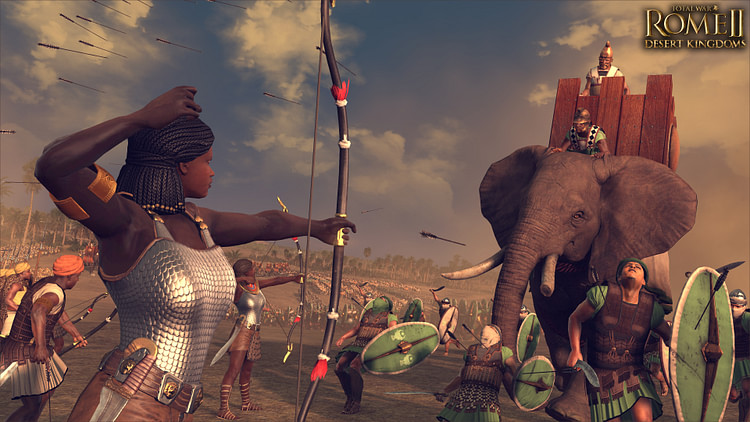
Kush was a kingdom in northern Africa in the region corresponding to modern-day Sudan. The larger region around Kush (later referred to as Nubia) was inhabited c. 8,000 BCE but the Kingdom of Kush rose much later. The Kerma Culture, so named after the city of Kerma in the region, is attested as early as 2500 BCE and archaeological evidence from Sudan and Egypt show that Egyptians and the people of Kush region were in contact from the Early Dynastic Period in Egypt (c. 3150 - c. 2613 BCE) onwards. The later civilization defined as 'Kushite' probably evolved from this earlier culture but was heavily influenced by the Egyptians.
While the history of the overall country is quite ancient, the Kingdom of Kush flourished between c. 1069 BCE and 350 CE.The New Kingdom of Egypt (c. 1570-1069 BCE) was in the final stages of decline c. 1069 BCE, which empowered the Kushite city-state of Napata. The Kushites no longer had to worry about incursions into their territory by Egypt because Egypt now had enough trouble managing itself. They founded the Kingdom of Kush with Napata as its capital, and Kush became the power in the region while Egypt floundered.
Kushite kings became the pharaohs of Egypt's 25th Dynasty and Kushite princesses dominated the political landscape of Thebes in the position of God's Wife of Amun. The Kushite king Kashta (c. 750 BCE) was the first to establish himself on the Egyptian throne and appointed his daughter, Amenirdis I, the first Kushite God's Wife of Amun. He was followed by other great Kushite kings who reigned until the Assyrian invasion of Egypt by Ashurbanipal in 666 BCE.
In c. 590 BCE Napata was sacked by the Egyptian pharaoh Psammeticus II (595-589 BCE) and the capital of Kush was moved to Meroe. The Kingdom of Kush continued on with Meroe as its capital until an invasion by the Aksumites c. 330 CE which destroyed the city and toppled the kingdom. Overuse of the land, however, had already depleted the resources of Kush and the cities would most likely have been abandoned even without the Aksumite invasion. Following this event, Meroe and the dwindling Kingdom of Kush survived another 20 years before its end c. 350 CE.
[ca-desertkingdoms]
NAME
The region was known by the Egyptians as Ta-Sety (“The Land of the Bow”), in reference to skilled Kushite archers, by the time of the Old Kingdom of Egypt (c. 2613-2181 BCE) and the northern area, bordering Egypt, as Wawat. What Kush was called by its inhabitants at this time is unclear; perhaps it was always known as Kush – or some variant thereof – since Egyptian inscriptions also refer to it as Kus, Kas, and Kash. The designation 'Kush' seems to be indigenous while the later name for the same region, Nubia, came most likely from the Egyptians to the north.
The region of Kush was the main source of gold for the Egyptians, and it is thought that 'Nubia' derived from the Egyptian word for gold, 'nub'. There is another theory, however, which claims that 'Nubia' derives from the people known as the Noba or Nuba who settled there. The Egyptians also knew the land as Ta-Nehsy (“Land of the Black People”). Greek and Romanwriters referred to the region as Aethiopia (“Land of the Burnt-Faced Persons”) in reference to the indigenous peoples' black skin, and the Arab tribes knew it as Bilad al-Sudan (“Land of the Blacks”). It should be noted, however, that these designations may or may not have been referencing the whole region.
KERMA & EARLY KUSH
The city of Kerma was established in Kush by c. 2400 BCE and was powerful enough to threaten Egypt as attested by Egyptian inscriptions and forts built to repel raids from the south. Even so, the kings of Kerma and Egypt established a lucrative trade for both parties and Egypt relied on Kerma for the import of gold, ebony, incense, exotic animals, and ivory among other luxury items.
The city centered around a structure known as a deffufa, a fortified religious center created from mud brick and rising to a height of 59 feet (18 meters). Interior passageways and stairs led to an altar on the flat roof where ceremonies were held but what these services entailed is unknown. The largest deffufa (the term means 'pile' or 'to mass') is known today as the Western Deffufa, and there is a smaller one to the east and a third which is even smaller. It is thought these formed a triad of a religious center around which the city then rose and was enclosed by walls.

Western Deffufa Temple, Kerma
The Kerma Culture is thought to have flourished between c. 2400 - c. 1500 BCE. The Egyptian king Mentuhotep II conquered the region at the beginning of the Middle Kingdom (2040-1782 BCE) but Kerma remained a thriving metropolis and was powerful enough by the time of the Second Intermediate Period of Egypt (c. 1782 - c. 1570 BCE) to threaten Egypt in conjunction with the people known as the Hyksos who had established themselves as a political and military power in Egypt's northern Delta region.
The Kushites of Kerma and the Hyksos engaged in trade with the Egyptians at Thebes until Ahmose I (c. 1570-1544 BCE) drove the Hyksos from Egypt and then marched south to defeat the Kushites. Egyptian campaigns into Kush continued during the reigns of Thutmose I (1520-1492 BCE) and Thutmose III (1458-1425 BCE). The end of the Kerma period is usually given as c. 1500 BCE when Thutmose I attacked the city. Thutmose III then founded the city of Napata after his campaigns which consolidated Egyptian power in the region.
NAPATA
Napata was clearly influenced by Egyptian culture from its very beginning. Rulers were buried beneath pyramid tombs with Egyptian grave goods, making dating certain graves difficult since a relatively recent grave of a Kushite king might contain items from 200 years before his reign. The lack of a written record also makes positive dating difficult. Scholar Derek A. Welsby notes how “studying the Kingdom of Kush is like a detective story in which a number of disparate and often apparently contradictory facts must be woven into a coherent and plausible narrative of events” (9). Even so, it is clear that Napata was the religious center of the region and became a wealthy city due to trade.
Thutmose III built the great Temple of Amun below the nearby mountain of Jebel Barkal which would remain the most important religious site in the country for the rest of its history, with later Egyptian pharaohs such as Ramesses II (1279-1213 BCE) adding to the Temple of Amun and the city. The priests of Amun, fairly quickly, were exercising the same kind of political power over Kushite rulers that they had with Egyptian kings since the time of the Old Kingdom.
EGYPT'S WEAKNESS WAS KUSH'S STRENGTH, & THE KINGDOM OF KUSH IS FIRST DATED TO C. 1069 BCE WHEN THE KUSHITE KINGS WERE ABLE TO REIGN WITHOUT FEAR OR REFERENCE TO EGYPTIAN MONARCHS.
As the New Kingdom declined c. 1069 BCE, however, Napata grew stronger as a political entity independent of Egypt. The priests of Amun in Egypt had been steadily gaining even greater power at Thebes and by the time of the Third Intermediate Period of Egypt (c. 1069-525 BCE) the high priest at Thebes ruled Upper Egypt while the pharaoh ruled Lower Egypt from the city of Tanis.
Egypt's weakness was Kush's strength, and the Kingdom of Kush is first dated to c. 1069 BCE when the Kushite kings were able to reign without fear or reference to Egyptian monarchs or policies. Napata was chosen as the capital of the new kingdom which continued to trade with Egypt but were able to expand their commerce now with other nations. Kings at first were still buried at Kerma but eventually the royal necropolis was established at Napata. The kingdom grew steadily until it was powerful enough to take what it wanted from Egypt whenever it pleased, and yet when this time came, they did not enter Egypt as conquerors but as rulers intent on preserving Egyptian culture.
THE 25TH DYNASTY
The Third Intermediate Period in Egypt, although not as chaotic and dark as early Egyptologists have claimed, saw a general decline in the wealth and international prestige of the nation. At the same time, Kush was flourishing and the first Kushite king known by name, Alara, unified the kingdom and consolidated religious rites centered at Napata. His dates are unknown (although many have suggested possibilities), and he would become a legendary figure to the people of Kush for his long and prosperous reign, but his existence is verified through ancient inscriptions and the discovery of what is most likely his tomb.
His successor, Kashta, held a great admiration for Egyptian culture, importing artifacts from the north and "Egyptianizing" Napata and the Kingdom of Kush. As Egypt declined, and power in Lower Egypt had less and less reach into Upper Egypt, Kashta quietly had his daughter Amenirdis I appointed God's Wife of Amun at Thebes. He was no doubt able to do this owing to the relationship between the Priests of Amun at Napata and those at Thebes, although no documentation attests to this. The position of God's Wife of Amun, first established during the Middle Kingdom, had grown in importance to the extent that, by Kashta's time, a woman holding the position was the female equivalent of the High Priest of Amun and had enormous wealth and political power.
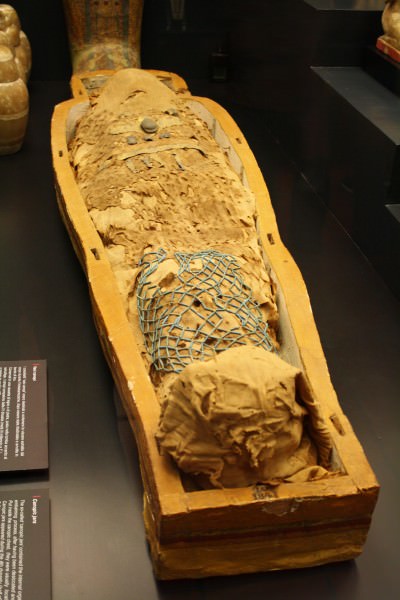
Mummy of Amenirdis
Amenirdis I took control of Thebes and then simply claimed rule of Upper Egypt. The princes of Lower Egypt at this time were engaged in their own conflicts with each other and so Kashta arrived at Thebes and declared himself King of Upper and Lower Egypt. Without raising an army or initiating any kind of conflict with the Egyptians, he founded the 25th Dynasty of Egypt under which the country was ruled by a Kushite monarchy. Kashta did not live long after his success, however, and was succeeded by his son Piye (747-721 BCE).
There is no record of the reaction of the princes of Lower Egypt to Kashta's declaration but they strongly objected to Piye's efforts to consolidate Kushite rule in the country. Piye did not negotiate with those he saw as rebel princes and marched his army north, conquering all the cities of Lower Egypt, and then returned to Napata. He allowed the conquered kings to retain their thrones, re-establish their authority, and continue on as they had previously; they simply had to acknowledge him as their lord. Piye never ruled Egypt from Thebes and does not seem to have given it much thought after his campaign.
Piye's brother, Shabaka (721-707 BCE) succeeded him and continued to reign from Napata. The royalty of Lower Egypt again rebelled, however, and Shabaka defeated them. He established Kushite control firmly throughout Lower Egypt all the way to the Delta region. Early 20th-century CE scholars claim that this was a “dark time” for Egypt when Nubian culture supplanted traditional Egyptian values but this cannot in any way be supported. So-called Nubian culture, by this time, was highly Egyptianized and, further, Shabaka admired Egyptian culture as much as his brother and father had. He continued to observe Egyptian policies and respected Egyptian beliefs. He had his son, Haremakhet, appointed High Priest of Amun at Thebes, effectively making him ruler of Egypt, and embarked on a series of building projects and reconstruction efforts throughout the country. Shabaka, far from destroying Egyptian culture, preserved it.
WITHOUT RAISING AN ARMY OR INITIATING ANY KIND OF CONFLICT, KASHTA FOUNDED THE 25TH DYNASTY OF EGYPT UNDER WHICH THE COUNTRY WAS RULED BY A KUSHITE MONARCHY.
Shabaka's younger brother (or nephew), Shebitku (707-690 BCE) succeeded him and began well until he came into conflict with the Assyrians. The Egyptians had maintained a buffer zone between their northern borders and the region of Mesopotamia which had been lost by this time. Kingdoms such as Judah and Israel had now rebelled against domination by the Assyrians of Mesopotamia and Shabaka had given sanctuary to a rebel leader, Ashdod, who had revolted against the Assyrian king Sargon II (722-705 BCE). The 25th Dynasty continued to support these kingdoms against the Assyrians, and this brought the Assyrian army to Egypt under their king Esarhaddon in 671 BCE.
Esarhaddon met the Kushite king Taharqa (c. 690-671 BCE) in battle, defeated him, captured his family and other Kushite and Egyptian nobles, and had them sent back to Nineveh in chains. Taharqa himself managed to escape and fled to Napata.He was succeeded by Tantamani (c. 669-666 BCE) who continued to antagonize the Assyrians and was defeated by Ashurbanipal who conquered Egypt in 666 BCE.
THE GREAT CITY OF MEROE
The 25th Dynasty ended with Tantamani, and he was replaced by the Assyrians with a puppet king known as Necho I. Necho's son, Psammeticus I (also known as Psamtik I, c. 665-610 BCE), threw off Assyrian rule and founded the 26th Dynasty of Egypt. Psammeticus I and his successor, Necho II, ruled well, but Necho II's successor, Psammeticus II, felt he needed a glorious military campaign in keeping with the great pharaohs of the New Kingdom. He, therefore, led an expedition against Kush, destroying towns, temples, monuments, stele, and finally the city of Napata before he grew bored with the campaign and returned to Egypt.
At this time, c. 590 BCE, the capital of the Kingdom of Kush moved further south to the city of Meroe for safety. The kings of Meroe continued to emulate Egyptian custom and fashion and follow Egyptian policy and religious practice until the reign of the king Arkamani I (also known as Ergamenes, 295-275 BCE). The Priests of Amun had long held power over the Kushite monarchy by allotting each king a certain amount of time to reign, and when their god indicated to them that time was up, the king had to die and another was chosen by the priests.
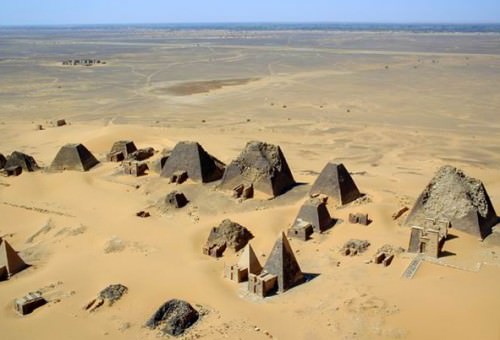
The Pyramids of Meroe
According to the historian Diodorus Siculus (1st century BCE), Arkamani I had been educated in Greek philosophy and refused to be controlled by the superstitions of the priests. He led a band of men to the temple, had all the priests slaughtered, and ended their power over the monarchy. He then instituted new policies and practices which included abandoning Egyptian culture, with an emphasis on Kushite. Arkamani I discarded hieroglyphic script in favor of another known as Meroitic which, to date, has not been deciphered. The fashion of the people of Meroe during his reign shifts away from Egyptian to distinctly Meroitic and the gods of the Egyptians become assimilated into Kushite deities such as Apedemak. The tradition of burying royalty at Napata was also abandoned and kings would thenceforth be entombed at Meroe.
Another interesting innovation of Arkamani I's reign was the establishment of female monarchs at Meroe. These queens, known as Candaces (also Kandake, Kentake) ruled between c. 284 BCE - c. 314 CE. Although they had male escorts in public ceremonies, they were not subject to male domination. The earliest recorded queen is Shanakdakhete (c. 170 BCE) who is shown in full armor leading her troops in battle. The title of Candace is thought to mean “Queen Mother” but exactly what this refers to is unclear. It may have meant “royal woman” or “mother of the king” initially but the queens who held the title appear as monarchs who were not defined by their relationship with men. One of these queens, Amanirenas (c. 40-10 BCE), led her people successfully through the Meroitic War between Kush and Rome (27-22 BCE) and was able to negotiate favorable terms in the peace treaty from Augustus Caesar.
CONCLUSION
Meroe, on the banks of the Nile, was an agricultural and industrial complex, as well as the capital of the Kingdom of Kush, and grew wealthy through its iron works and trade. Grains and cereals were exported along with iron weapons and tools and livestock roamed the fields around the city. Meroe was so wealthy that it became legendary and the Persian king Cambyses II(525-522 BCE) is said to have even launched an expedition to sack it. If said expedition was ever mounted, it never reached the city, and legend claims that Cambyses II's army was defeated by the inhospitable terrain they had to cross and the weather.
Large forests rose on the far side of the fertile fields surrounding the city which were irrigated by canals off the Nile. The upper class lived in large houses and palaces which looked down on broad avenues lined with statuary while the lower classes lived in mud-brick homes or huts. According to ancient inscriptions, even the poorest citizen of Meroe was still better off than anyone elsewhere. The Temple of Amun, in the center of the city, was reportedly its jewel and on par with the earlier temple at Napata.
In c. 330 CE the Axumites invaded and sacked Meroe. Although the city would continue on another 20 years, it was effectively destroyed by the Axumites. Even if the invasion had not come, however, Meroe was doomed and had brought this on itself.The iron industry required massive amounts of wood to create charcoal and fuel the furnaces for the iron resulting in deforestation of the once-plentiful forests. The fields were overgrazed by cattle and overused for crops, depleting the soil.Before the Axumites ever arrived, Meroe must have been in decline and would have had to be abandoned anyway. When the last of the people walked away from the city c. 350 CE, the Kingdom of Kush had come to an end.
MAP
LICENSE:
Article based on information obtained from these sources:with permission from the Website Ancient History Encyclopedia
Content is available under License Creative Commons: Attribution-NonCommercial-ShareAlike 3.0 Unported. CC-BY-NC-SA License